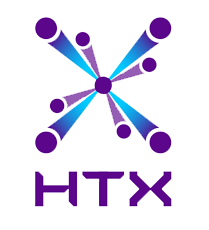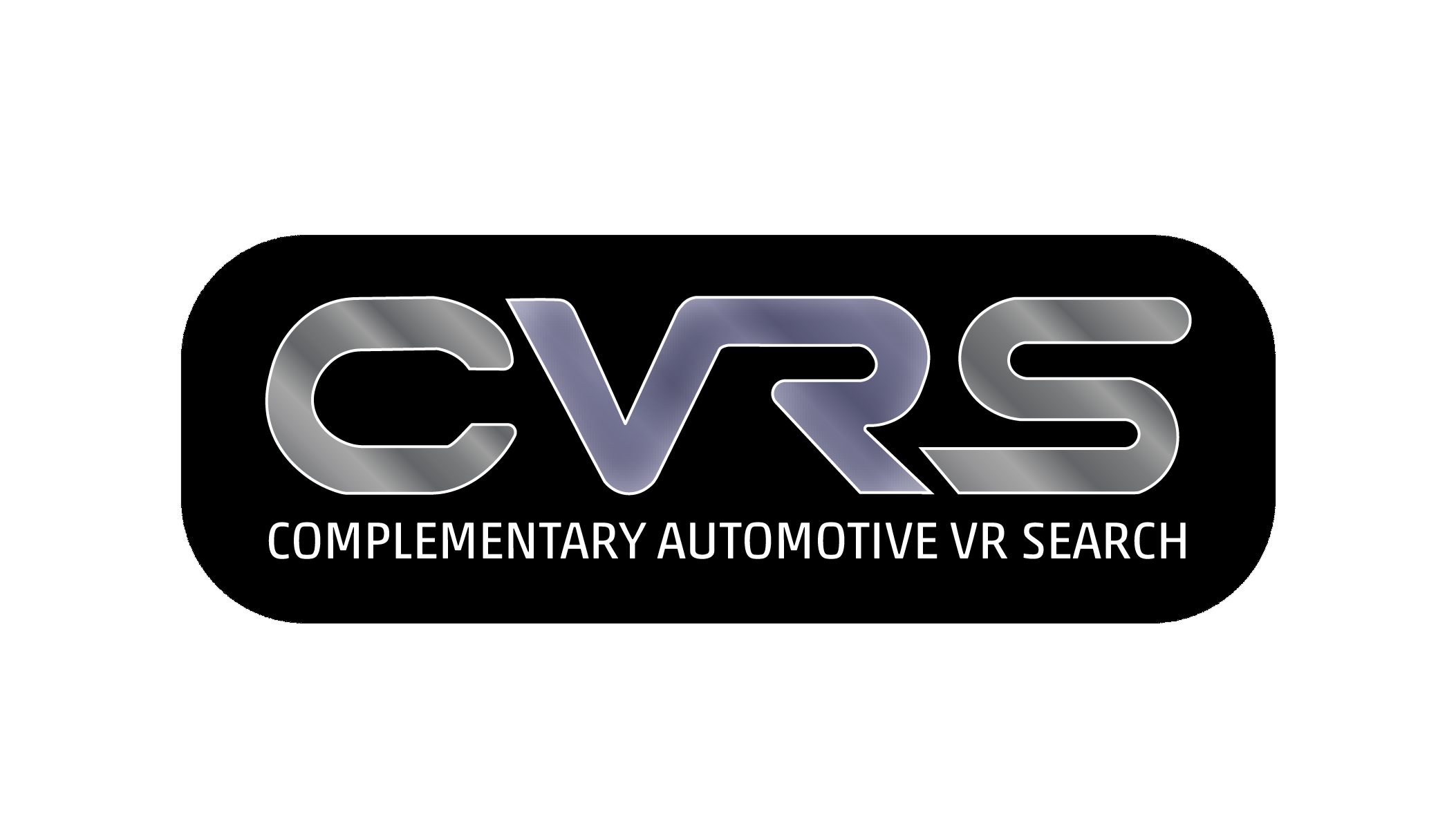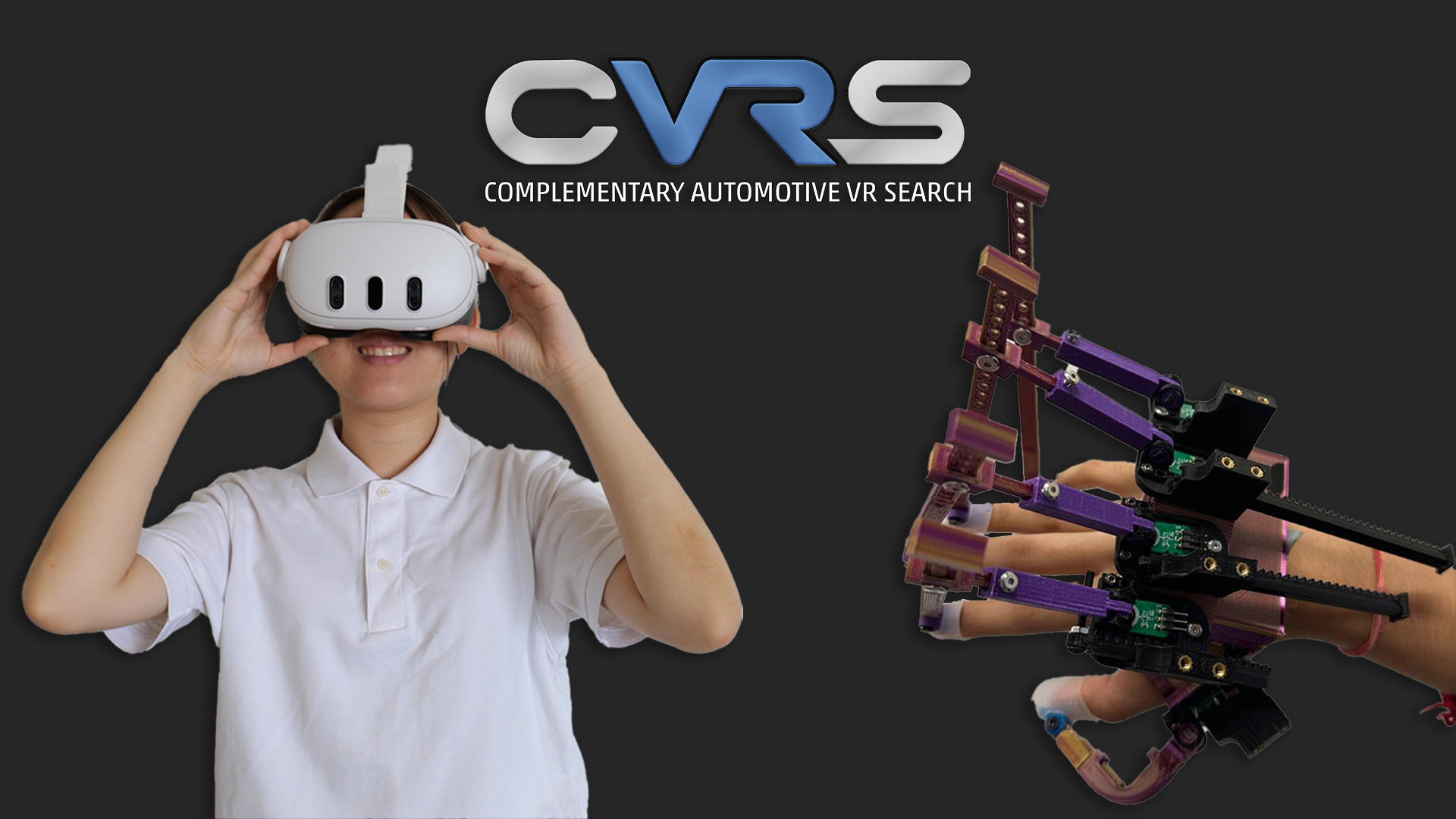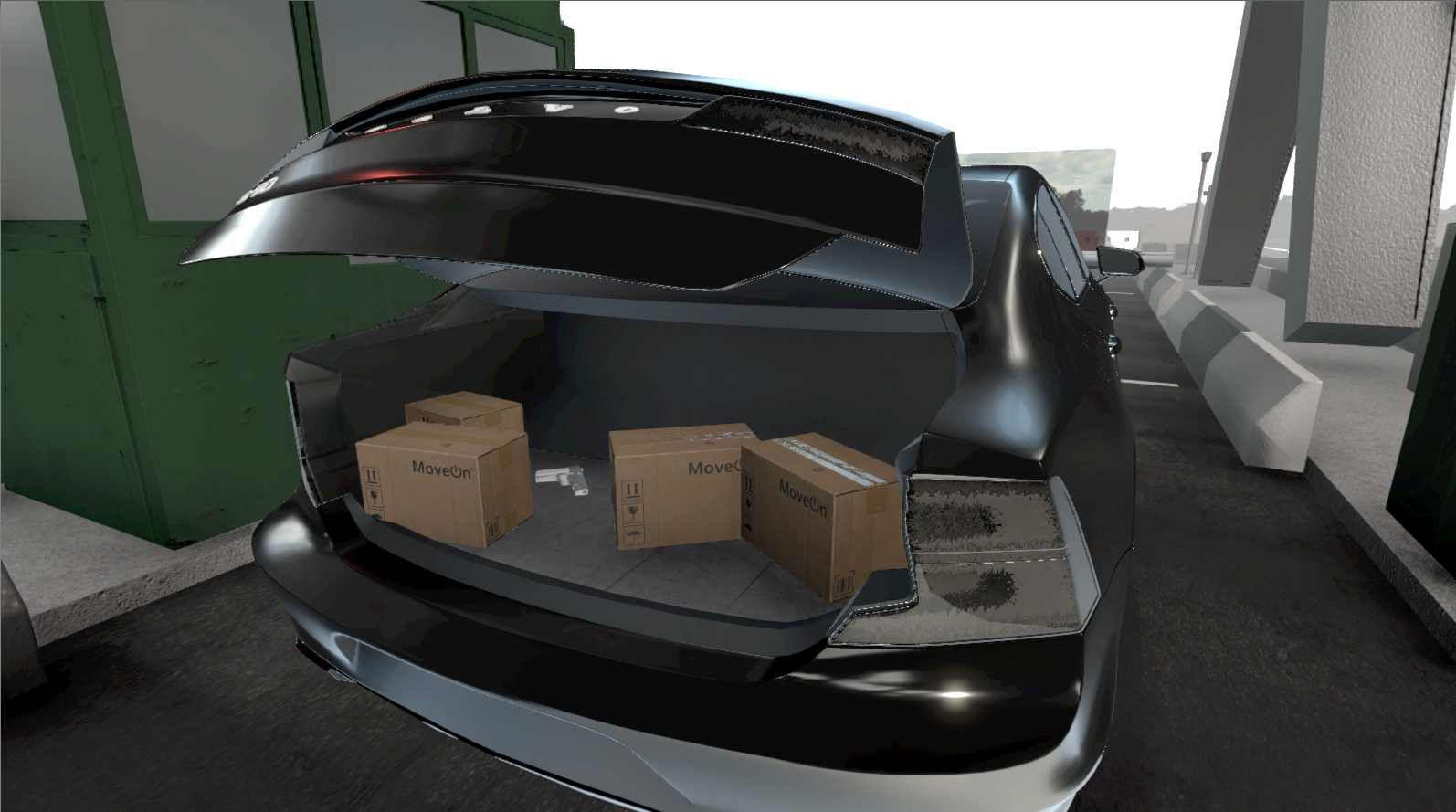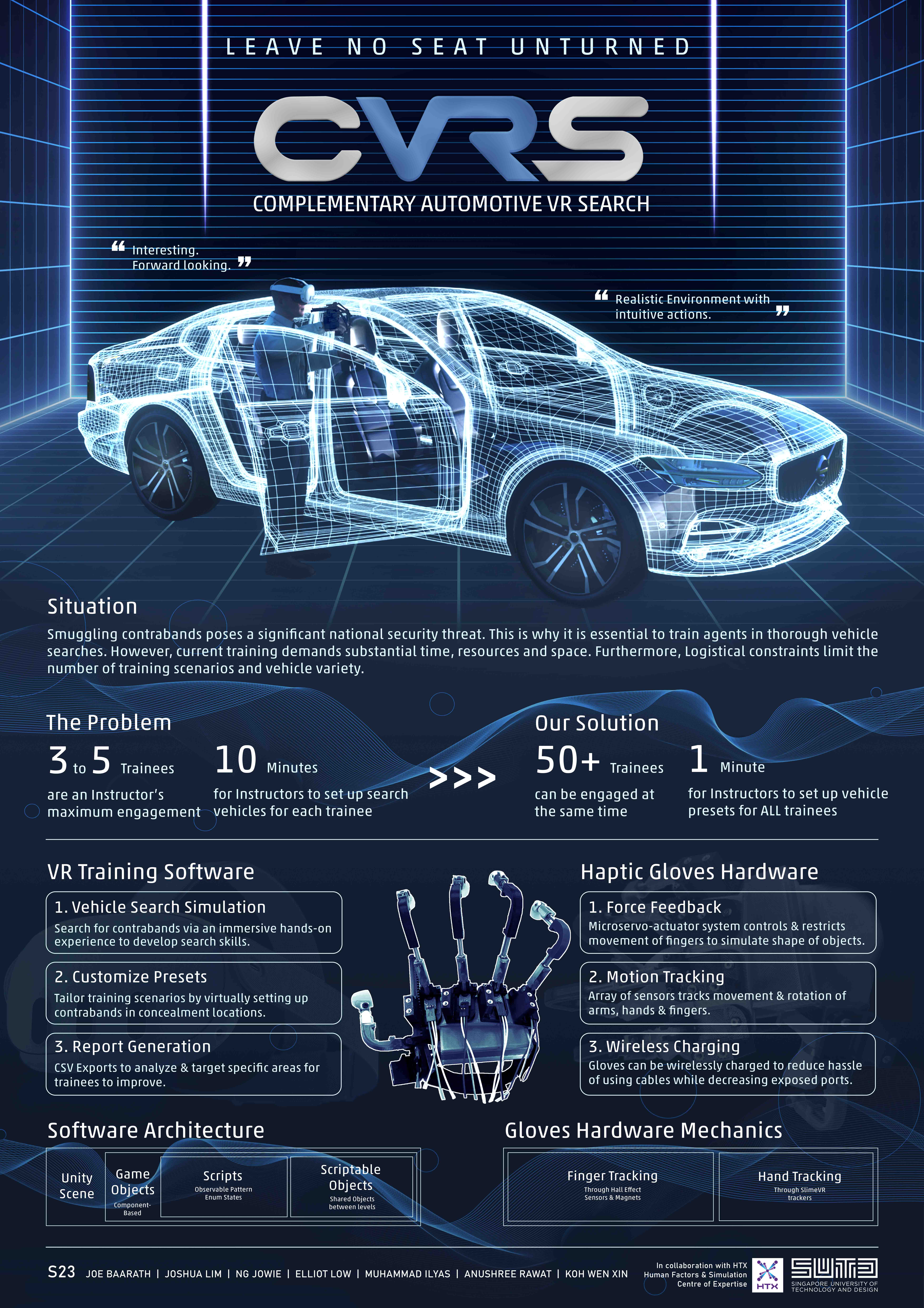The smuggling of prohibited items via vehicles into controlled high-security zones presents a significant security threat with potentially devastating outcomes. Hence, training security agents to conduct thorough vehicle searches is crucial, yet this training can be time, resource, and space intensive. In addition, there is a limited variety of vehicles and scenarios for current training processes due to logistical constraints. All of these factors culminate in reduced training effectiveness for vehicle searches. A solution was proposed to overcome these challenges and enhance training effectiveness.
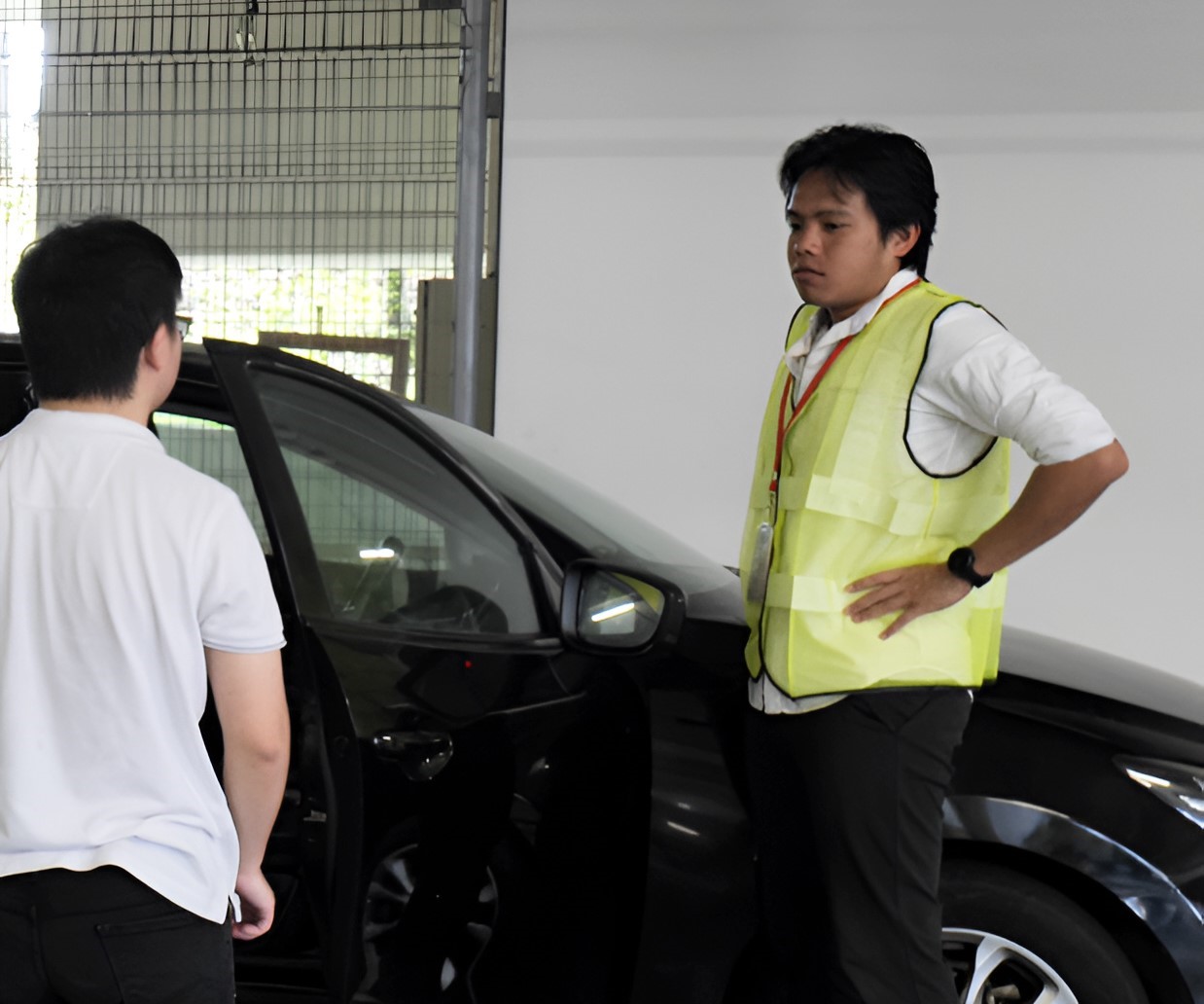
Problem
Situation
- Smuggling contraband poses a significant security threat.
- It is essential to train agents in thorough vehicle inspection.
Challenges
- Training demands substantial time, resources, and space.
- Logistical constraints limit training scenarios and vehicle variety.
Gaps in Current Training
Limited Vehicle Access & Variety
Long Setup Times
Limited Personal Feedback
Due to logistical constraints and compact training curriculum, trainees have limited practical sessions with vehicles.
Manual manpower resource required to set up hidden contraband for each batch of trainees for each session.
Due to group setting for training, trainees may not get personalized assessment to discover their blind spots.
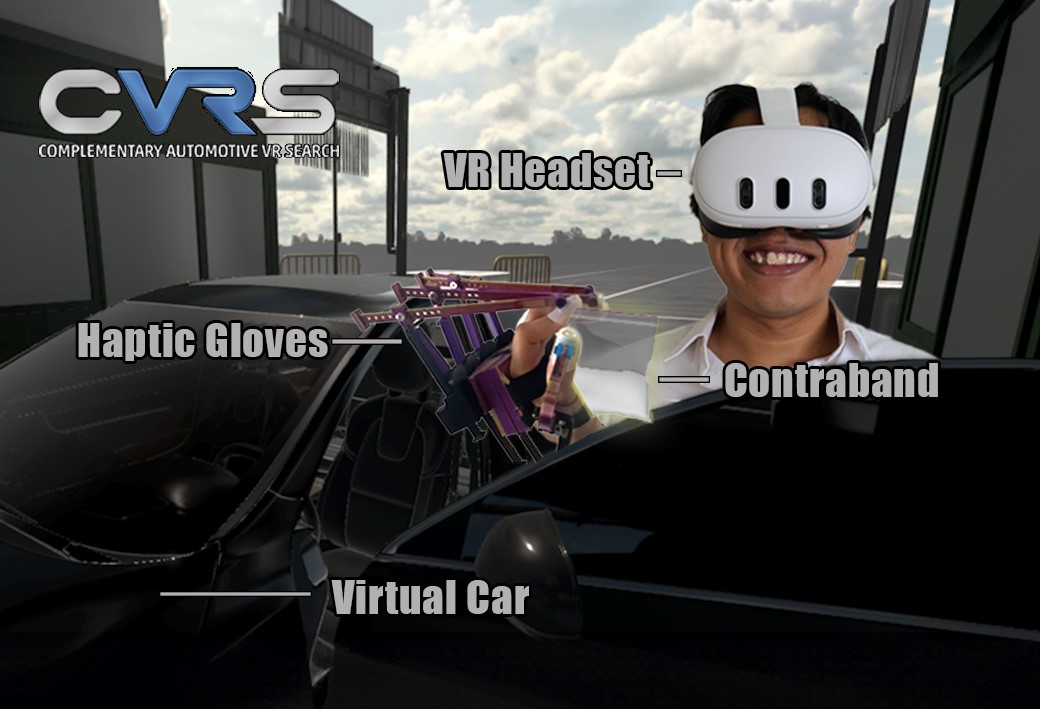
Solution Scope
Solution Idea
- to create an immersive, accurate and portable for security agent trainees to use easily
- provide resource-efficient complementary training that enhances training effectiveness
Scope
- Virtual Reality Training App
- Motion Trackers
- Haptic Gloves
Introducing CVRS
Complementary Automotive Virtual Reality Search (CVRS) offers an immersive virtual reality training solution designed specifically for security agents to enhance their vehicle inspection skills, enabling them to effectively uncover hidden contraband within vehicles. This system generates assessment reports that evaluate the agent’s search proficiency, providing valuable insights into their performance and areas for improvement. For added level of realism to the training, custom exoskeletal wired-actuator haptic gloves are utilized, simulating the feedback necessary for intuitive and effective searches. This innovative solution not only fosters rapid skill development among agents but also reinforces best practices, ensuring that they are well-equipped to perform their duties with the highest level of competence.
Key Features
- Immersive VR Vehicle Search Training
- Generate Assessment Report
- Instructor’s Customizable interface to set presets
- Exoskeletal Wired-Actuator Haptics Glove for improved realism
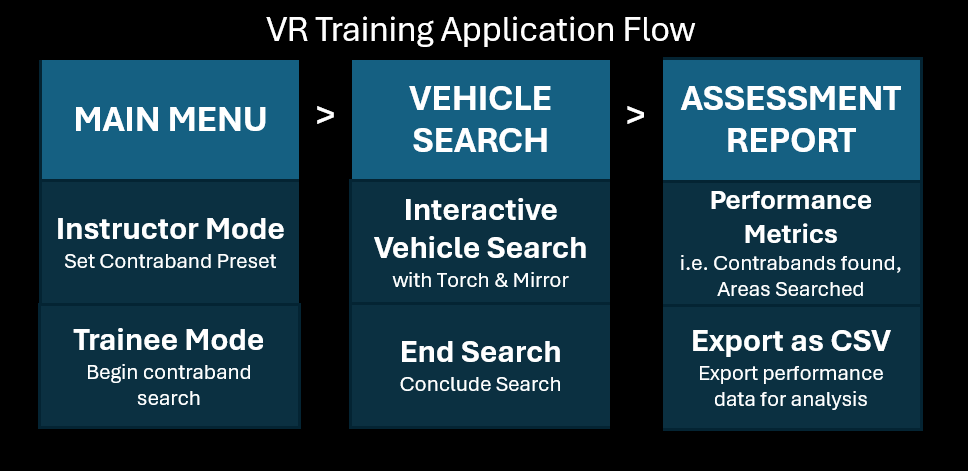
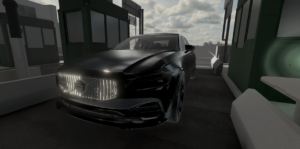 Immersive Environment: Dive into realistic, three-dimensional car search training scenarios with the VR simulation, where every detail is crafted for authenticity.
Immersive Environment: Dive into realistic, three-dimensional car search training scenarios with the VR simulation, where every detail is crafted for authenticity. Data-Driven Insights: The VR car search training offers integrated data collection and analysis, providing insights into your progress and performance based on the areas searched and items found.
Scalability and Flexibility: Tailor the VR vehicle search training to fit different group sizes and scenarios, ensuring relevance and effectiveness across industries. CVRS is easily scalable and adaptable to your training needs.
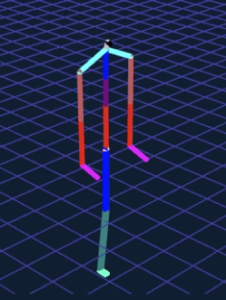
Motion Tracking: Our different arrays of sensors allow us to track the movement and rotation of the arms, hands and fingers
Real-time alignment: The trackers are able to monitor and mimic human motion as you move
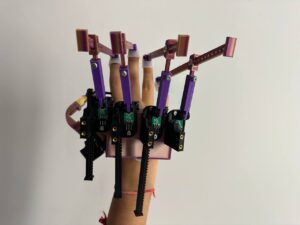
Force Feedback: Our microservo-actuator system controls and restricts the movement of your finger in order to simulate the shape and feel of an object
Skeletal structure: Unlike traditional gloves, our gloves are adjustable and can be fit a variety of hand sizes due to its signatulearre skeletal structure
Wireless Charging: Our glove can be wirelessly charged to reduce the hassle of using cables and decrease the number of exposed, open ports
VR Training Demo
Training Flow Diagram
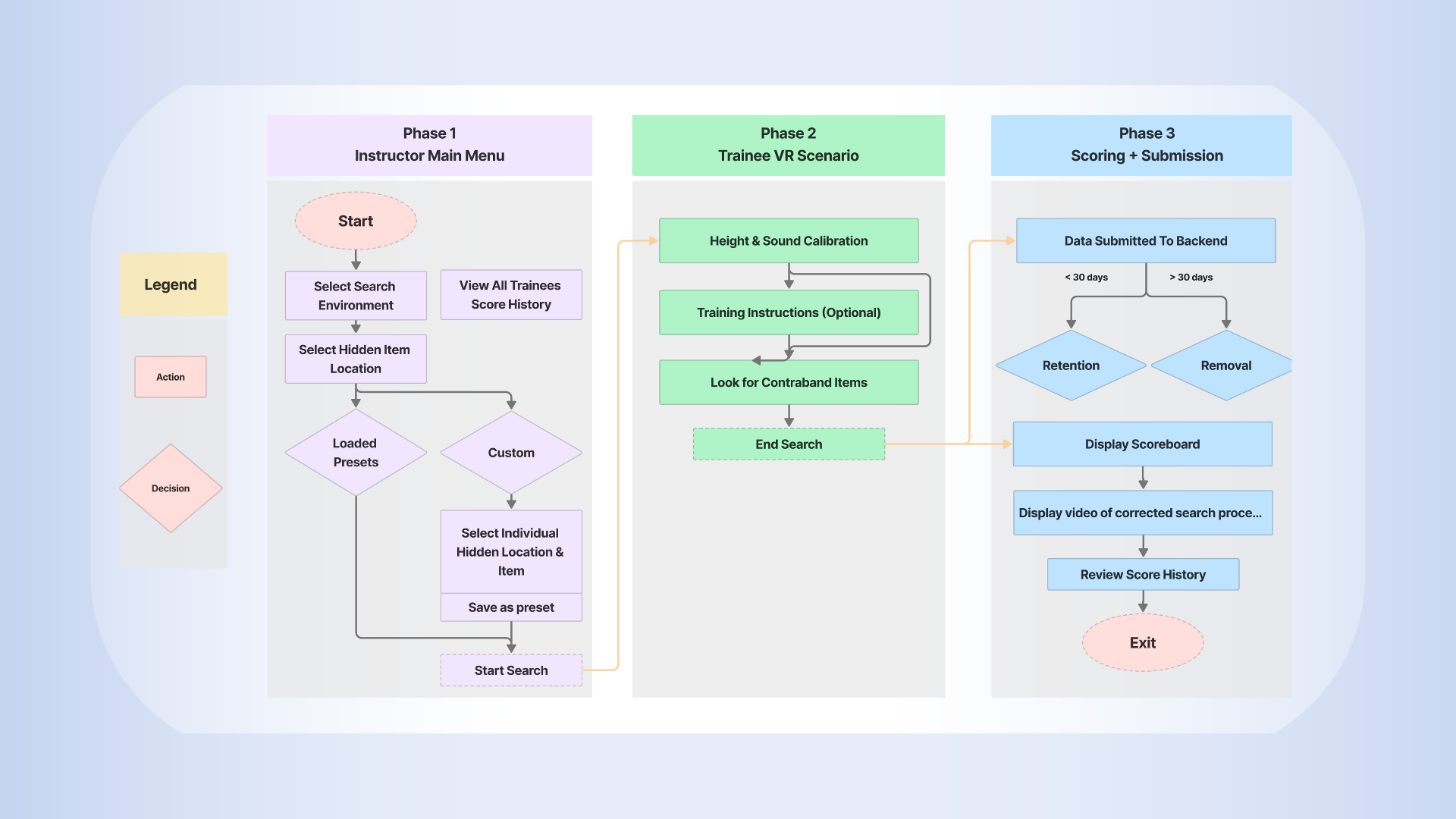
Impact of CVRS
By immersing agents in realistic, virtual environments, CVRS significantly accelerates the development of critical inspection skills. This hands-on, experiential learning approach can result in more efficient and effective training outcomes.
Performance Analytics
With the system’s capability to generate assessment reports, trainers and trainees gain access to actionable insights into performance levels and specific areas needing improvement. This data-driven approach allows for personalized training adjustments, focusing on reinforcing strengths and addressing weaknesses.
Standardization and Best Practices
CVRS serves as a tool for standardizing training procedures and reinforcing best practices among security agents. Consistent training ensures that all agents meet a high competency threshold, maintaining uniformity in the quality of inspections conducted.
Operational Efficiency
By simulating various scenarios within a virtual environment, CVRS eliminates the need for physical resources, such as actual vehicles and contraband replicas, leading to resource-efficient training processes. This not only reduces operational costs but also allows for scalable training sessions without the limitations of physical space and materials.
Risk Reduction
Practicing in a virtual setting minimizes the risks associated with live training exercises, providing a safe platform for agents to learn and make mistakes without real-world consequences.
Evolution of CVRS
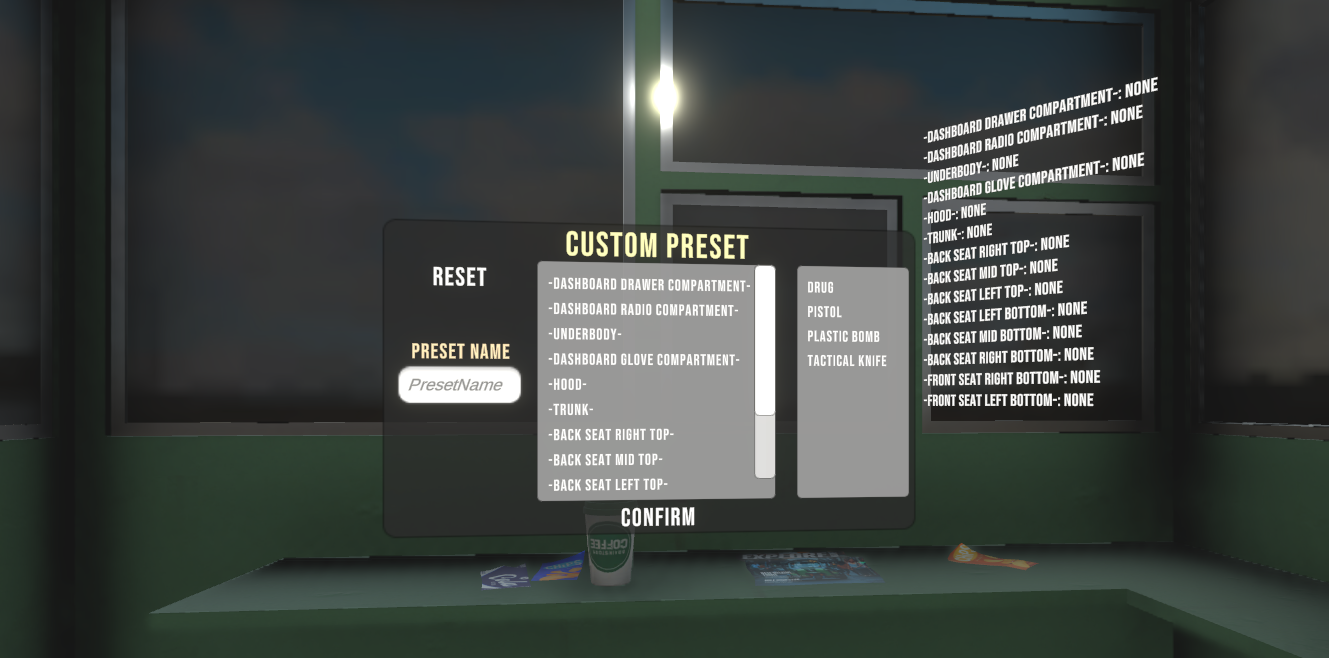
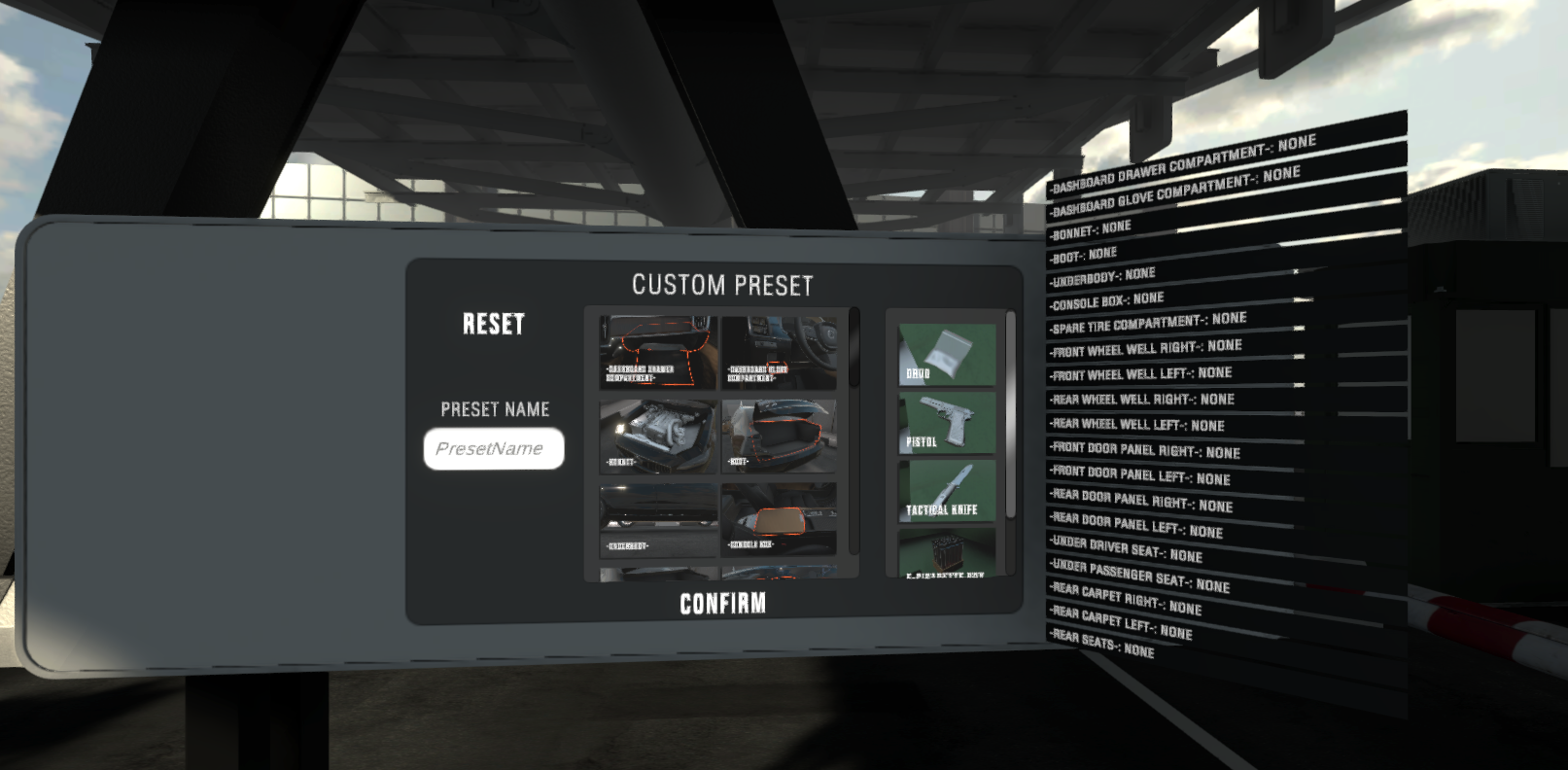
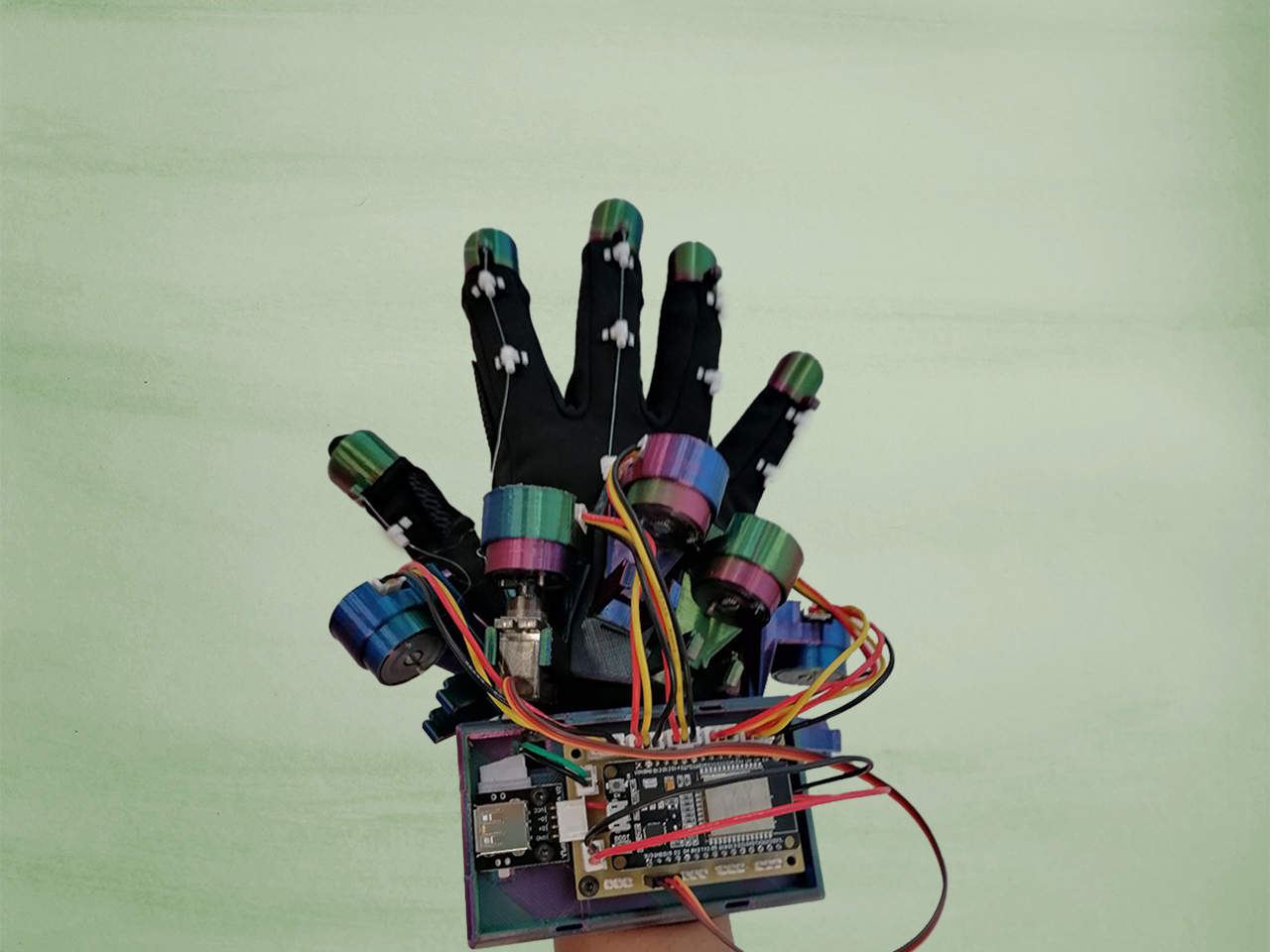
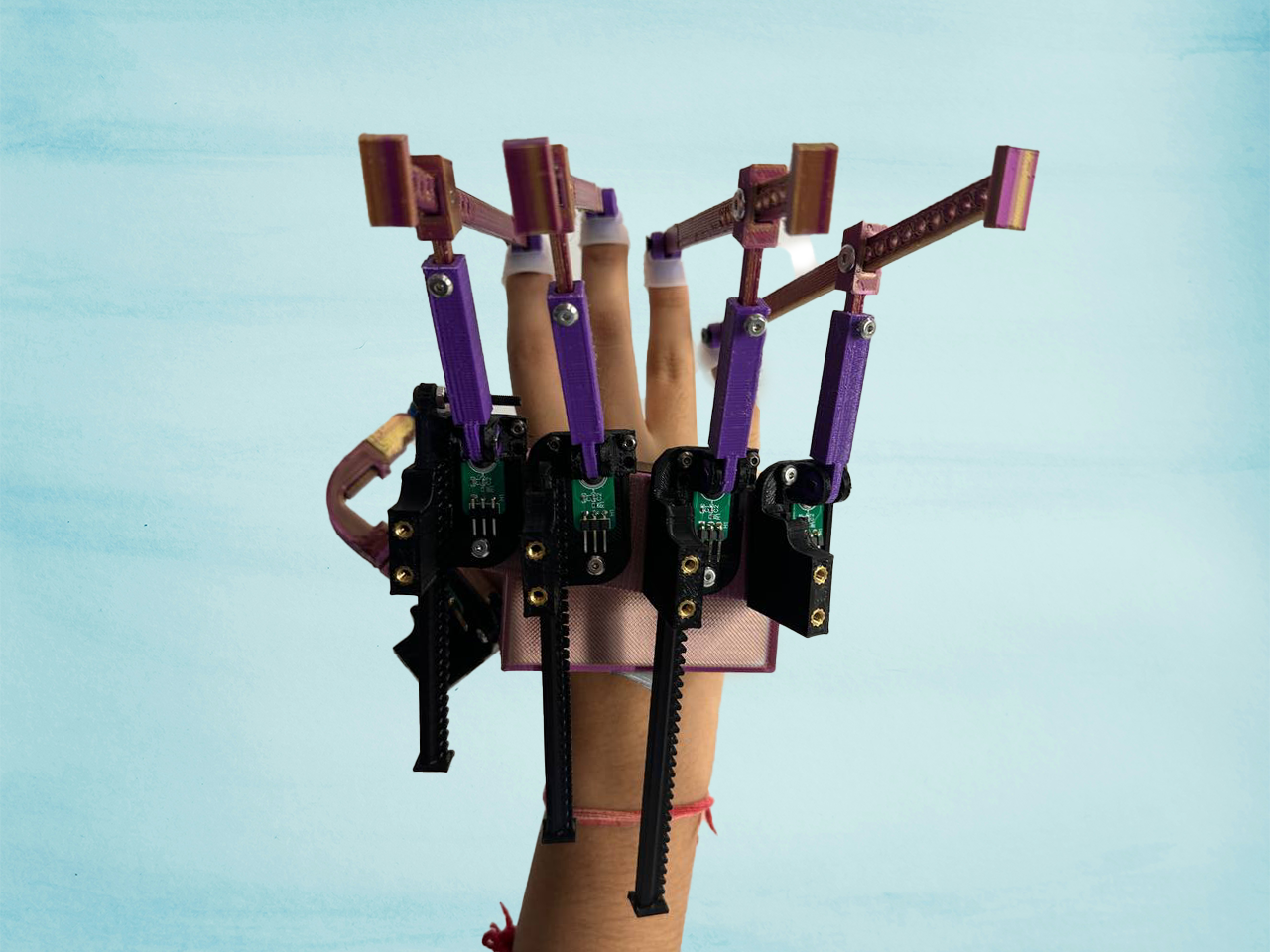
User Testing
Meet the team

test
In Collaboration with:
